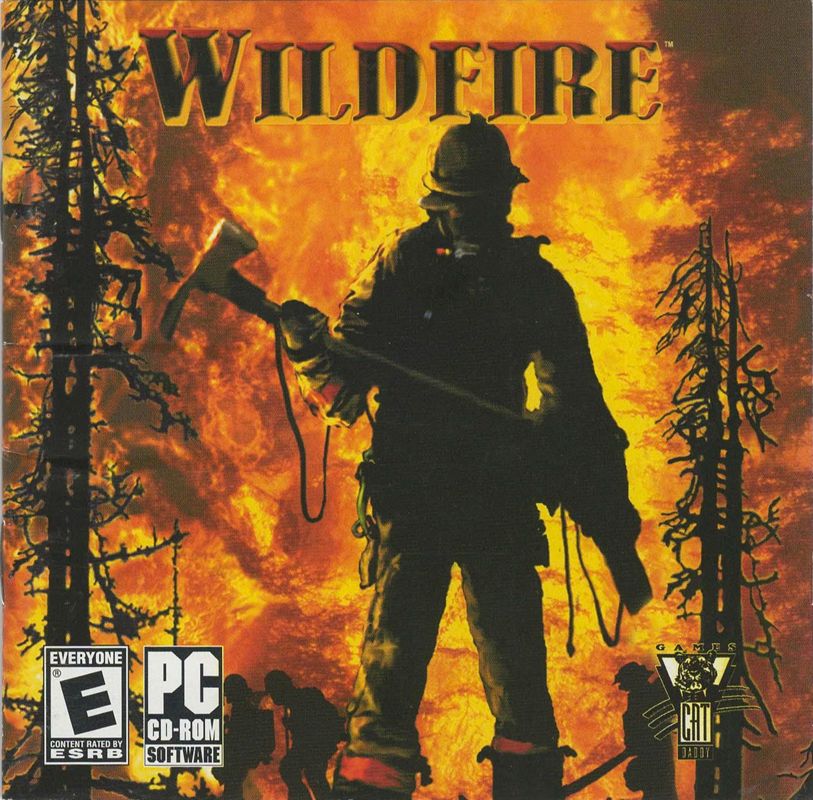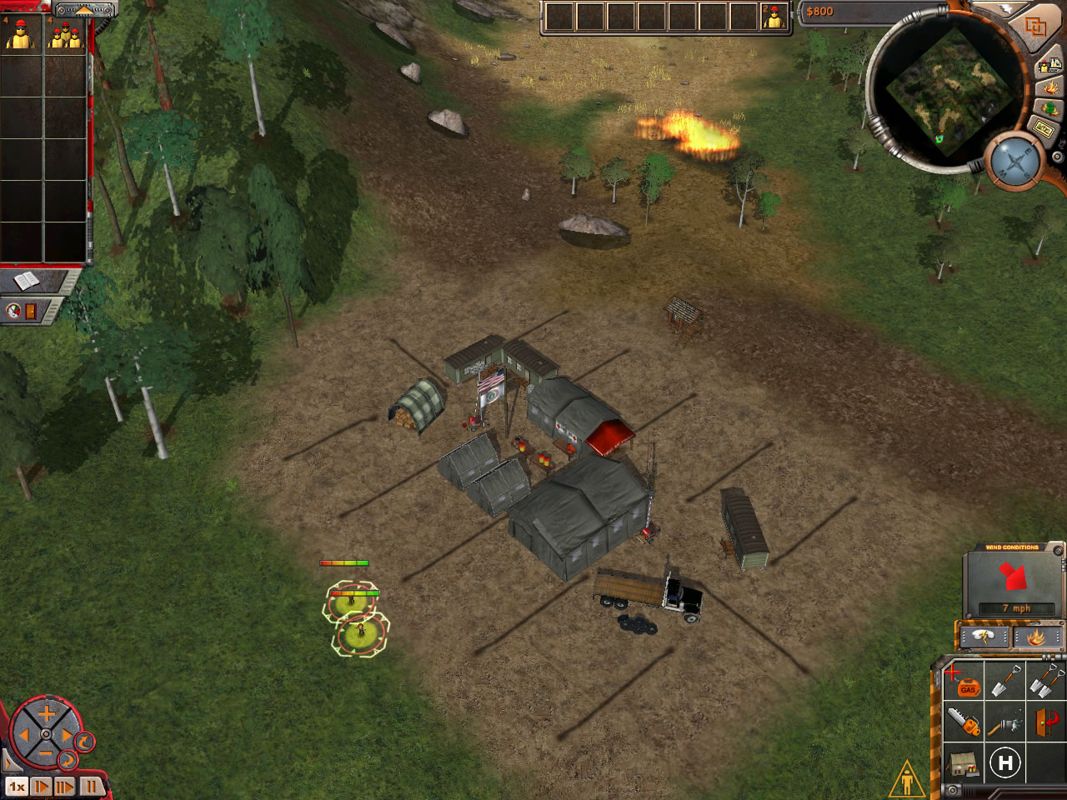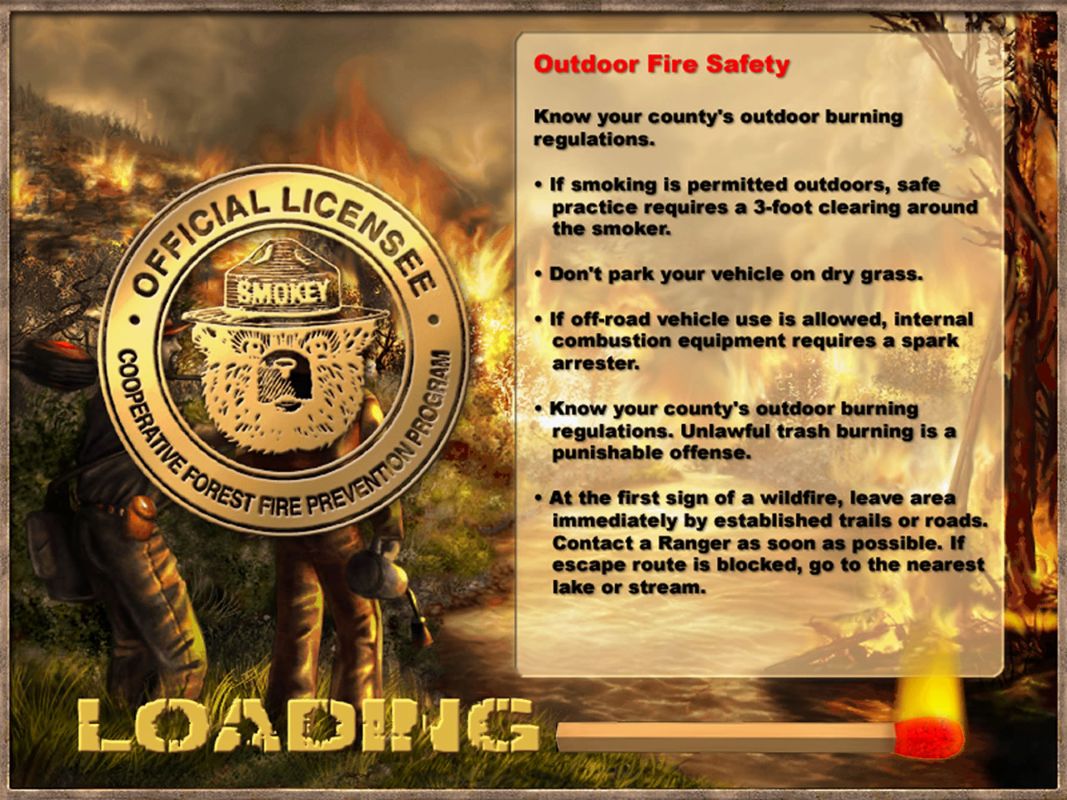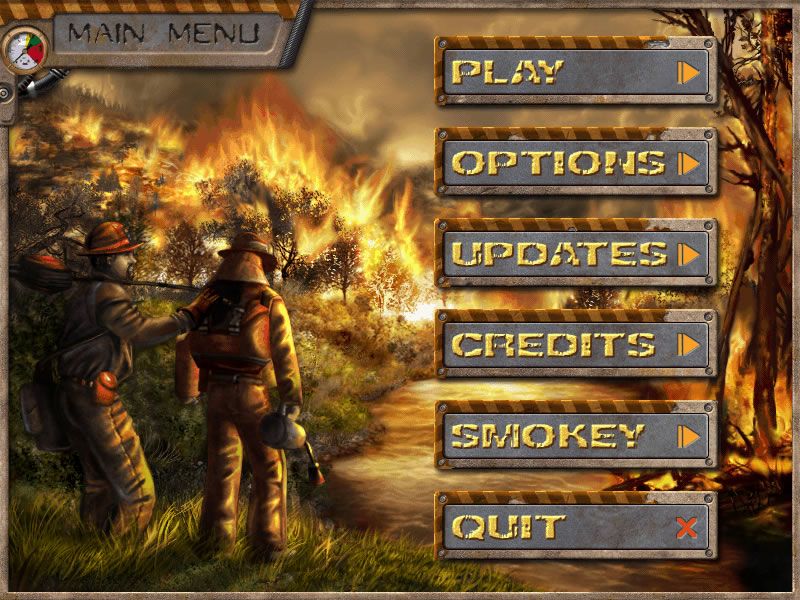Retro Replay Review
Gameplay
Wildfire places you at the heart of high-stakes wildfire management, tasking you with controlling local firefighting forces against rapidly spreading flames. Unlike urban-focused simulation titles such as the Emergency series, Wildfire’s gameplay revolves entirely around forest and grassland fires. Your primary objective is not simply to douse the blaze but to strategically contain it by cutting off fuel sources with fire lanes or executing backburns. This shift in focus creates a distinctive real-time strategy challenge that demands careful planning under pressure.
(HEY YOU!! We hope you enjoy! We try not to run ads. So basically, this is a very expensive hobby running this site. Please consider joining us for updates, forums, and more. Network w/ us to make some cash or friends while retro gaming, and you can win some free retro games for posting. Okay, carry on 👍)
The core mechanic revolves around mission-based scenarios in which failure occurs the moment the fire spreads uncontrollably. In addition to the main task of containment, secondary objectives often arise, such as rescuing stranded civilians or safeguarding critical infrastructure. These additional goals add layers of tension and variety to each mission, requiring you to allocate resources judiciously between offensive firebreak efforts and protective rescue operations.
To achieve these objectives, you manage a diverse roster of units—ground firefighters, bulldozers for earthworks, and helicopters for rapid deployment or aerial water drops. Bases function as production hubs, allowing you to build new units as needed. Unit commands are issued primarily through the mouse, with context menus offering specialized orders. While the interface is generally intuitive, mastering menu navigation and unit micro-management is essential to succeed in more complex missions.
Budget management adds another strategic element, forcing you to balance the cost of reinforcements, equipment upgrades, and emergency hires. Overspending can hamper your ability to respond to evolving threats, while under-investing may leave you shorthanded during critical moments. The resource economy, combined with fast-moving flames, ensures that no two missions play out the same way, keeping the gameplay fresh and challenging throughout the campaign.
Graphics
Visually, Wildfire impresses with its dynamic fire simulation and detailed environmental effects. Flames leap realistically across trees and dry brush, with embers carried by gusts of wind that you can see bending nearby foliage. Smoke plumes change shape and density over time, providing both an atmospheric backdrop and a tactical consideration as they can obscure vision when fighting multiple fronts.
The terrain is rendered in moderate detail, with varying vegetation types that affect the speed and intensity of the fire’s spread. Hills, rivers, and man-made roads create natural barriers or conduits for the blaze, and the game’s lighting system casts convincing shadows during day-and-night cycles. While not a showcase for high-end GPU power, the visuals strike a solid balance between performance and immersion, running smoothly on mid-range hardware.
Unit models—fire crews, bulldozers, and helicopters—are clearly distinguishable from a top-down perspective, making it easy to monitor your resources at a glance. Special effects for water drops, backburns, and explosions are crisp, and the UI overlays are sufficiently transparent so as not to obstruct critical action. Although the game doesn’t push the boundaries of photorealism, its graphical style serves the gameplay well, ensuring functional clarity during high-pressure moments.
Minor texture pop-in and occasional frame rate dips can occur when multiple fires converge in one area, but these issues rarely impact the strategic decisions you make. Overall, the art direction succeeds in conveying the urgency and scale of wildfire containment, elevating the tension of every mission.
Story
Wildfire doesn’t follow a deeply woven narrative with recurring characters; instead, it opts for a series of self-contained missions that each tell their own short story of crisis and containment. Each scenario introduces a new locale—ranging from sprawling national parks to remote rural communities—adding variety to the threats you face. The lack of a central protagonist allows you to feel like the unsung hero coordinating efforts behind the scenes.
Despite the absence of character-driven drama, the game crafts its own emergent storytelling through mission objectives. Rescuing a trapped family in a mountain cabin or racing against time to save a power substation creates memorable set pieces that feel personal. Briefing videos and mission debriefs provide context, but the real narrative unfolds in the heat of the moment as you adapt to sudden wind changes and resource constraints.
Sound design plays a crucial role in reinforcing the stakes, with crackling fires, distant radio chatter, and the whirr of helicopter blades immersing you in each scenario. Although there are no voiced protagonists, the combination of environmental audio cues and terse mission updates keeps you engaged. This minimalist approach to storytelling ensures that your own tactical decisions remain the focal point of the experience.
Overall, Wildfire’s story structure is functional rather than cinematic, prioritizing gameplay variety over narrative depth. For players who appreciate sandbox-style mission design and the real-time challenge of wildfire management, this approach works well. If you’re expecting a rich, character-driven plot, however, you might find the story elements more utilitarian than emotionally charged.
Overall Experience
Wildfire delivers a tense, methodical take on real-time strategy by swapping urban emergencies for the ever-shifting frontlines of forest fires. Its combination of strategic unit placement, resource budgeting, and rapid-fire decision-making creates an experience that is both challenging and uniquely rewarding. Each mission tests your ability to think ahead, adapt to changing conditions, and prioritize conflicting goals under tight time constraints.
Newcomers to strategy games may face a steep learning curve as they familiarize themselves with backburn tactics, budget management, and context-menu commands. Thankfully, the game’s tutorial missions and early campaign levels provide a gentle introduction to core mechanics. Veteran RTS fans will appreciate the depth offered by advanced difficulty settings and bonus objectives that encourage mastery of every tool in your arsenal.
While the game’s pacing can occasionally feel punishing—especially when a sudden wind shift renders hours of progress moot—the sense of accomplishment from a hard-won victory is palpably satisfying. The variety of mission types and environmental conditions ensures strong replay value, as does experimenting with different unit compositions and containment strategies.
In sum, Wildfire stands out as a distinctive entry in the emergency simulation genre. It may not have the narrative grandeur of big-budget titles, but its focused gameplay loop, atmospheric graphics, and emergent storytelling through missions combine to form an engaging package. If you’ve ever wondered what it’s like to command a wildfire response team and thrive under pressure, Wildfire offers an immersive, strategic journey worth exploring.
 Retro Replay Retro Replay gaming reviews, news, emulation, geek stuff and more!
Retro Replay Retro Replay gaming reviews, news, emulation, geek stuff and more!









Reviews
There are no reviews yet.